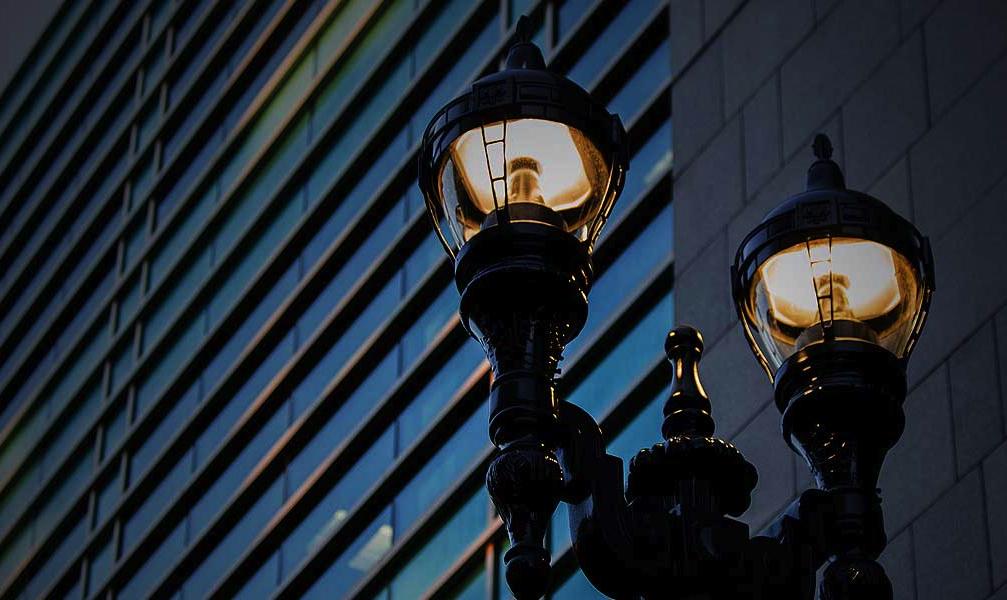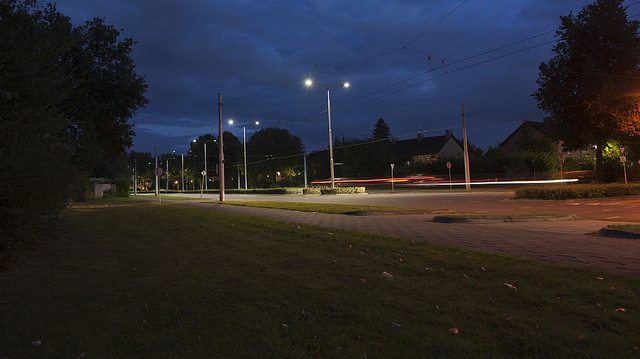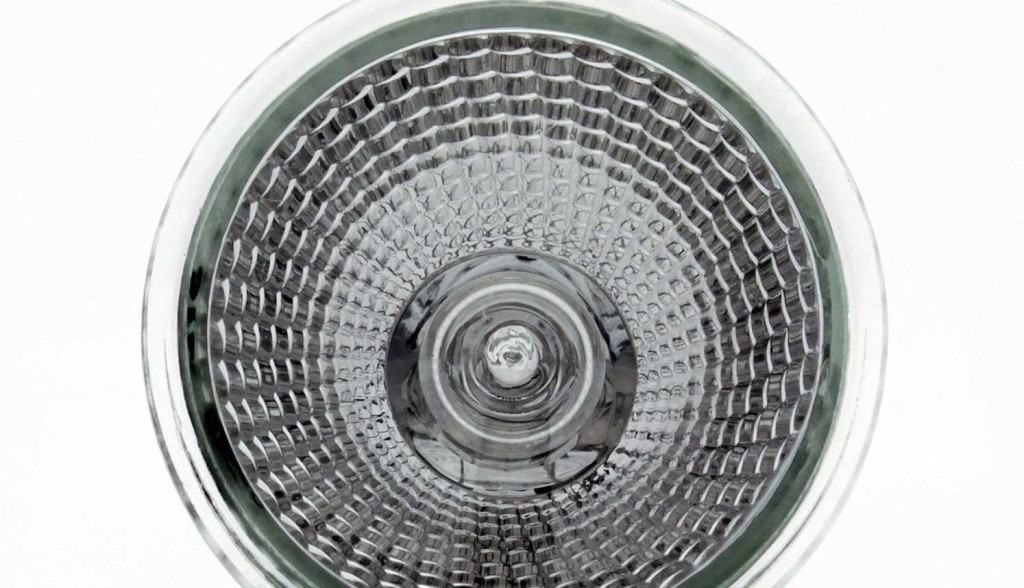Archive for October 2015
Royal Mail Group has reduced its energy demands by 11GWh per annum by replacing lighting with LED lamps and additional controls across 16 mail centres within the UK. The replacement programme converted 200,000 m2 of operational floor space and saw the removal of approximately 20,000 fluorescent lamps. The financial payback period was 2.5 years.
The LED lighting replacement programme represents a significant commitment by Royal Mail Group to reduce energy usage throughout its portfolio. In addition to the 11GWh annual energy saving, further substantial benefits include a reduced maintenance liability by the removal of fluorescent lamps.
Royal Mail worked closely with the contractors and supply chain to optimise a programme designed to have zero impact on mail centre operations in terms of mail throughput and disruption. Royal Mail Group Property engaged with its internal ‘Environment Pillars’ and operations teams to assist with the coordination of the installation programme to ensure good practice and optimise savings.
The programme also incorporated the installation of daylight dimmable lighting controls on several projects together with PIR sensors to maximise energy savings and harness natural daylight. This has proven extremely effective and ensured additional energy savings have been generated.
The Royal Mail Group also integrated measurement and verification (M&V) in accordance with the International Measurement & Verification Protocol (IPMVP) at each site undergoing LED replacement. The M&V was undertaken by independent IPMVP-certified consultants. This provided a robust verification process, delivering evidence that targeted energy savings were being achieved and giving confidence for future deployment of LED low energy lighting schemes.
For more on this project, don’t miss LuxLive, where John Bradshaw, engineering and technical services manager at Royal Mail, will talk delegates through the rollout of LEDs and controls to the 16 UK mail centres
The project is shortlisted for the Lux Awards, also on Thursday 19 November.
energy efficient lighting · energy savings · LED lamps · led lighting · Novel Energy Lighting · royal mail led

Looks like a streetlight, acts like a computer: GE LED streetlights in San Diego, where intelligent, connected lighting could monitor things like traffic and crime. The new ‘Current’ services group embraces CEO Jeff Immelt’s industrial internet strategy, treating LEDs as computers that route information. The conventional lighting group -no longer called GE Lighting- keeps the old stuff. It’s possibly for sale.
ge fittings · ge lamps · ge led · ge lighting · intelligent connected lighting · novel enegy lighting · visible light communication
21
Video – How hospital lighting can help patients and save energy
Comments off · Posted by admin in LED
A panel of NHS facilities and energy managers and lighting professionals come together to discuss how lighting in hospitals can be tackled to improve patient outcomes and save energy
hospital led · hospital lighting · led lighting · led panels · led tubes · Novel Energy Lighting
21
How hospital lighting can help patients and save energy
Comments off · Posted by admin in LED
A panel of NHS facilities and energy managers and lighting professionals come together to discuss how lighting in hospitals can be tackled to improve patient outcomes and save energy

- What are the real benefits of investing in new lighting technology for healthcare?
- What are the key mistakes to avoid when upgrading lighting?
- What’s the latest knowledge on how lighting influences patient outcomes?
- How can we make healthier lighting a reality in healthcare facilities?
- How can healthcare bodies get funding for lighting upgrades?
There also needs to be better guidance on what works and what doesn’t and what is considered best practice. This would help me to convince people further up the chain and get funding”Damian Oatway
aurora led · energy efficient lighting · hospital led · hospital lighting · led lighting · Novel Energy Lighting
15
Kara – the New Integrated LED Interior Floodlight from Megaman UK
Comments off · Posted by admin in LED
Energy saving lighting expert Megaman UK has introduced the Kara integrated LED interior floodlight to its rapidly expanding fixtures range.
The 26W integrated fixture, Kara, delivers an excellent performance with up to 2400 lumens, two colour temperature options – 3000k and 4000k and a lamp life of up to 50,000 hours. The fitting has a fully adjustable tilting head which makes it perfect for applications such as retail cabinets and window displays where precision light is required. Kara is also an excellent choice for general retail displays and wall lighting. The Kara LED floodlight is also available as an emergency lighting option.
Kara comes with Megaman’s generous 3 year warranty, for more information on Kara and the wide range of fixtures offered see the website: www.novelenergylighting.com
kara led · led flood · led floodlight · megaman kara · Megaman LED · Novel Energy Lighting
Lux Reports:
Quantum dot technology set to be commercialised…European lamp ban goes ahead…and a new lighting show for the Middle East. Lux Today Oct 13 2015 presented by Courtney Ferguson.
eu halogen ban · LED lamps · led lighting · Novel Energy Lighting · quantum dot led

The EU Streetlight-EPC initiative aims to use energy performance contracting to stimulate roadlighting refurbishment
Lux Reports: The EU-backed Streetlight-EPC initiative aims to stimulate use of energy performance contracting (EPC) to drive take-up of energy-efficient streelighting refurbishment. The project hopes to get 36 EPC projects up and running in nine regions across the EU.
Most European regions have not yet seen a significant take-up of EPC, which can be a good funding mechanism in streetlighting refurbishment, where there are high energy costs and huge potential for savings. Apart from legal barriers, this can be attributed to the lack of understanding and trust in EPC and the absence of experienced energy service companies (ESCOs) and organisations facilitating the EPC market.
In Europe, streetlighting consumes a significant amount of electricity: there are more than 56 million streetlighting luminaires in operation, with an estimated electricity consumption of 35 TWh. For municipalities with older, inefficient systems, streetlighting can account for 30-50% of their total electricity consumption. The recent market introduction of LED technology for streetlighting offers high savings with comparatively short payback times.
The Streetlight-EPC project creates demand and supply for EPC projects by setting up regional EPC facilitation services. These services provide comprehensive support to both municipalities and SMEs as potential ESCOs. The nine regions in the scheme are Austria, Croatia, Czech Republic, Poland, Ireland, Sweden, Slovenia, Macedonia and Spain.
The project aims to implement 36 EPC projects, triggering investments worth €49 million, achieving annual savings of 32,100 MWh and €4.8 million. It aims to help 18 SMEs to become ESCOs.
A scheme in Palencia, Spain is a pioneer project. The town has a population of 81,000 and has 11,000 lighting points. High-pressure sodium and mercury lamps were being used, frequently with low efficiency and insufficient colour rendering. As a first step, 3,139 luminaires were changed to LED and a dimming control system was installed. The 12-year EPC contract will guarantee energy savings of 75%, with total savings of €2 million.
The Streetlight-EPC project started on 1 April 2014 and will run until 31 March 2017.
Visit www.novelenergylighting.com to explore your LED streetlighting needs. Or call us on 0208-540-8287.
EPC · led lighting · led street light · led street lighting · led streetlight · Novel Energy Lighting
6
Philips chief in passionate plea: ‘What are we waiting for?’
Comments off · Posted by admin in LED, Philips LED
Published on 29 Sep 2015
Philips Lighting chief Eric Rondolat has called on international business leaders to act on climate change by embracing new lighting technologies. PLUS: Internet of Things is theme of this year’s LuxLive show in London. Lux Today 29 September 2015 presented by Courtney Ferguson.
energy efficient lighting · led GU10 · LED lamps · led lighting · LED retrofit · led tubes · Novel Energy Lighting · philips led · philips lighting
6
EC upholds decision to ban mains-voltage directional halogens
Comments off · Posted by admin in LED, LED GU10, LED MR16 lamps
The European Commission has stuck with its decision to phase out mains-voltage halogen directional lamps from the European market in September 2016 following a review. The move has been described as a win for consumers and the environment by industry figures.
“Earlier this year we saw an EU vote delaying the phase out of non-directional halogen lamps until 2018 and this threw into question which way the balance would swing for their mains-voltage directional cousins,” commented Fred Bass, managing director of Neonlite International, owner of Megaman. “However, common sense has ruled and these highly inefficient light sources will now be phased out within a year.”
As part of the review of the lighting directive EC 1194/2012, four criteria needed to be assessed before a phase-out could be confirmed. Issues of affordability were under scrutiny, as well performance, equivalence to existing models and compatibility. The EU has confirmed that there is no reason to delay the ban on mains voltage directional halogen lamps, as all these areas have been sufficiently met.
“This ruling brings us one step closer to the eventual removal of all high-energy consuming halogens and can only be a positive move for both consumers and the environment alike,” Bass told Lux. “I stand by what I said when commenting on the delay in banning non-directional halogens earlier in the year, I truly believe that market forces will begin to take over in Europe and LEDs will win through, no matter when all halogens are eventually banned. High quality LED lamps are out there already, they do save money and energy and consumers will begin to convert to them more and more as they realise the benefits.”
Retrofit your premises with LED lighting today. Visit www.novelenergylighting.com to review our range of LED GU10 and LED MR16 lamps amongst other types. Call us to discuss volume orders: Tel: 0208-540-8287
energy efficient lighting · halogen ban · halogen lamps · led GU10 · led lighting · led mr16 · Novel Energy Lighting



